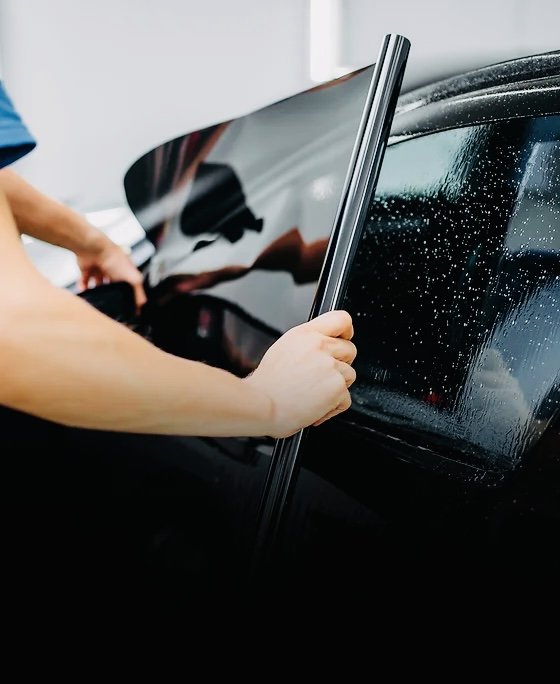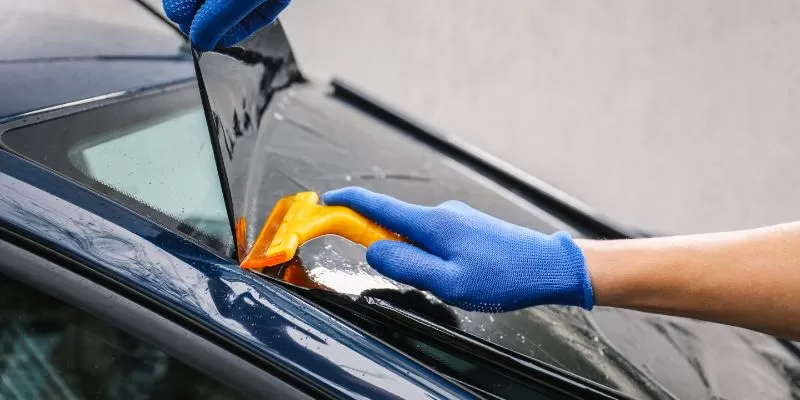Automobile Window Tinting: Improve Comfort and Minimize Glow While Driving
Automobile Window Tinting: Improve Comfort and Minimize Glow While Driving
Blog Article
Window Tinting Rules and Standards: What You Required to Know Before Tinting Your Car
Prior to continuing with home window tinting for your car, it is important to familiarize yourself with the diverse regulations and standards that regulate this technique throughout various states. These guidelines determine the acceptable degrees of color darkness, usually gauged by visible light transmission (VLT) portions, and consist of details specifications for front windshields intended at making certain roadway security.
Summary of Window Tinting Regulations
Home window tinting laws are often subject to variant across different territories, showing local regulations and safety considerations. These regulations dictate the permitted degrees of tint darkness and reflectiveness on vehicle windows, making certain that vehicle drivers maintain ample visibility while additionally safeguarding versus damaging UV rays and heat.
Most guidelines classify home window tinting based on the Visible Light Transmission (VLT) portion, which suggests the quantity of light that can go through the home window. Typically, lower VLT percentages symbolize darker colors. Regulations often differentiate in between the front, side, and rear home windows, with stricter constraints applied to the front windscreen to improve safety and security for both the motorist and other road individuals.
Compliance with window tinting policies is crucial, as offenses can result in penalties, compulsory elimination of the tint, and potential increases in insurance policy costs. It is vital for automobile owners to acquaint themselves with local laws before continuing with window tinting installments.
State-by-State Color Laws
Understanding the particular home window tinting policies in each state is essential for lorry owners looking for to follow the legislation. Each state in the U.S. has actually developed its very own collection of regulations regulating window tinting, which can differ significantly. These laws typically dictate the permitted levels of color darkness, the kinds of windows that can be tinted, and any kind of clinical exceptions that may apply.
For example, states like California have rigid constraints on color darkness for front home windows, while others, such as New Mexico, might allow darker tints. Additionally, specific states mandate specific presence percents for numerous windows, including the windshield, front side home windows, and back windows. It is essential for automobile owners to acquaint themselves with their state's laws to prevent possible penalties or fines.
In addition, some states might require a qualification sticker to be put on tinted home windows, showing compliance with state laws. Failing to abide by these regulations not just takes the chance of legal effects however can additionally influence security and presence while driving. As a result, vehicle owners need to carry out comprehensive research or get in touch with local authorities to make certain full understanding and compliance with state-by-state tint guidelines.
Allowed Tint Degrees and Kinds
Several lorry owners may be amazed to discover that enabled tint degrees and kinds differ extensively across various states. Each state has established its very own guidelines pertaining to the allowable darkness and reflectivity of home window tint, often measured by Visible Light Transmission (VLT) percentages. VLT refers to the amount of light that can go through the tinted windows; hence, a lower percent shows a darker tint.

Moreover, the types of tint materials enabled can differ, with some states restricting metal or mirror-like coatings. It is important for lorry owners to acquaint themselves with their state's certain regulations to make sure conformity. Non-compliance can lead to penalties, necessary removal of the tint, or other lawful consequences, making it necessary to comprehend these policies prior to waging installation.
Medical Exceptions for Tinting
While not all states provide allocations for medical exemptions pertaining to window tinting, those that do recognize the need for certain individuals to boost presence and my explanation convenience due to medical problems. Different medical conditions, such as lupus, skin cancer cells, and certain eye disorders, can provide people especially conscious sunlight. These individuals may call for darker colors to safeguard themselves from damaging UV rays and glare.

It is important to note that despite having a clinical exception, there may still be restrictions on the level of color permitted. Compliance with state regulations makes certain that people are both safeguarded and within lawful limitations. Those thinking about medical exceptions should contact their regional Department of Electric motor Autos or equal authority to recognize the treatments and requirements required to obtain an exception properly.
Fines for Non-Compliance
Stopping working to follow window tinting regulations can bring about substantial fines, which vary by state. Police are empowered to release citations for lorries that do not adhere to the specified tinting guidelines. These charges usually consist of fines, which can range from modest amounts to several hundred dollars, depending on the severity of the violation and the state concerned.
In some territories, duplicated offenses may result in intensifying fines or added penalties, such as obligatory court looks. Non-compliance might require the elimination of prohibited tinting, frequently at the owner's expense. In extreme instances, regular wrongdoers may deal with suspension of their vehicle enrollment till conformity is attained.
Furthermore, insurance coverage effects may develop from receiving numerous citations for home window useful reference color violations. Insurance firms might see such violations as an indicator of riskier actions, possibly causing enhanced premiums or problem in insurance coverage.
To avoid these fines, it is critical for car proprietors to familiarize themselves with their regional window tinting legislations and make certain that their lorry complies (Window Tinting). This proactive strategy not just avoids lawful ramifications however also promotes road security
Conclusion

Most laws classify home window tinting based on the Visible Light Transmission (VLT) percent, which indicates the amount of light that can pass via the home window. Conformity with home window tinting guidelines is vital, as infractions can result in penalties, compulsory elimination of the tint, and prospective boosts in insurance premiums.Understanding the specific window tinting policies in each state is vital for vehicle proprietors looking for to comply with the regulation. These regulations typically determine the allowable degrees of tint darkness, the kinds of home windows that can be tinted, and any kind of medical exceptions that may apply.
For instance, states like The golden state have stringent constraints on color darkness for front home windows, while others, such as New Mexico, might permit darker colors.
Report this page